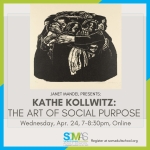Family tree, use DNA or paper records?
Morals in those days? Victorian claptrap. The real moral then was for a woman not to get caught.
ps - I would make the family tree accurate. Otherwise, what's the point.
So you would put the bio father down, and link the other father as a step father? I might do that since I did it on another branch where there was a death and a remarriage
I know this would be more money but perhaps try another DNA test with another company. I've heard that there sometimes are different results.
galileo said:
I know this would be more money but perhaps try another DNA test with another company. I've heard that there sometimes are different results.
I have no reason to mistrust the results. The family member in question was 7 months pregnant when she got married (not sure how common that was in the early 1900's), and the family that we seem to be matching with literally lived one town over, and used the church in the same town as the pregnant family member at that time, so it isn't a huge stretch to believe that she may have gotten pregnant by this person and not the person she married months later.
I have a similar issue in my family and I've linked the bio father into our family tree. The difference is that as adults (ages 50-60), the half-siblings all met and developed a relationship, long after all the parents were dead.
Of course that means the bio father's wife is now part of my tree..
Apparently there are options for labeling bio parents and step parents, so I added both and labeled them accordingly.
spontaneous said:
galileo said:I have no reason to mistrust the results. The family member in question was 7 months pregnant when she got married (not sure how common that was in the early 1900's), and the family that we seem to be matching with literally lived one town over, and used the church in the same town as the pregnant family member at that time, so it isn't a huge stretch to believe that she may have gotten pregnant by this person and not the person she married months later.
I know this would be more money but perhaps try another DNA test with another company. I've heard that there sometimes are different results.
Regardless, a DNA test may yield different results -- people have multiple DNA strands running through the same body, so results can vary depending on which strand of yours was tested.. If you have a sibling or a cousin that's in the same line, it would be good to have that person do a confirmatory test. That said, you have some particular facts that support your hypothesis.
When my wife did the Ancestry DNA test, she got back results that were decidedly different than what her years of thorough research would have suggested, so she called them up. She was told that the findings of a person's ethinic roots can vary greatly from sibling to sibling depending on which particular sets of genes were passed down, and that in order to get a really accurate result one would need to test five siblings and aggregate the results. They don't really highlight that in their commercials.....
To be blunt, I'll trust the DNA over paper records. Infidelity is a fact of life, and is by no means a modern invention. Even without infidelity, and even going down a maternal line, you'll find that in past generations people weren't meticulous in differentiating between adopted, step, and biological children.
In NJ in the 1800's we have one branch of the family where a daughter seems to bounce between two siblings. Each time she shows up in a state or federal census she is with one or the other, but every time is listed as "daughter." To find which one is her bio family we'd have to search birth records in Ireland, and as the Irish apparently only have five surnames and 3 first names that they all rotate and share between the entire country, this would be no easy feat.
A great uncle was raised by a foster family, and just drops off the face of the earth. I found him by accident, in his 1937 social security application he is using the new name given to him by his foster family, but apparently knew enough about his family history that he listed his birth parents. With this particular relative he did eventually go back to his birth name by the 1940's, but if he had kept the adopted name (common), and had listed his foster family as his bio family (no Homeland Security proof of ID back then) then his children may never have realized that he adopted and that his name had changed. Go back more than a hundred years and this would be more likely the outcome of a foster/adopt situation.
My great grandmother "self reported" her birth certificate in the 1930's and listed her step father as her birth father. Had this been the only paper on her, we never would have known otherwise.
Today's meticulous paperwork leads to too much faith being put into the paperwork of years past.
Featured Events
-
Stephen Whitty Presents - Hometown Movie Stars: The Celebrated Actors Of CHS
May 6, 2024 at 7:00pm




















So let's say you always had John Doe Sr as John Doe Jr's father, and have that listed on your family tree. But then you take one of those DNA tests, and have some pretty compelling evidence that John Doe Sr isn't actually Jr's father, but rather Joe Schmoe is the father. Who would you link as the father on your family tree? John Doe Sr and Joe Schmoe both died nearly a hundred years ago, so we don't know what kind of family dynamics were going on. Did Jane Doe try to pass off her pregnancy as being caused by John Doe, or did John Doe know she was carrying someone else's baby and marry her out of kindness, or maybe a mutual arrangement? We'll never know. FWIW John Doe Sr died early on in Jr's life, so it isn't as though he was a huge father figure for him.
Oh, and let's also say that you find out that Jr had a half brother that no one in our family knew about until the DNA test, another son of Joe Schmoe, would you link this person to your tree?
So much for all the supposed morals people allegedly had back in the day, we might need to call Maury Povich to come straighten this all out.